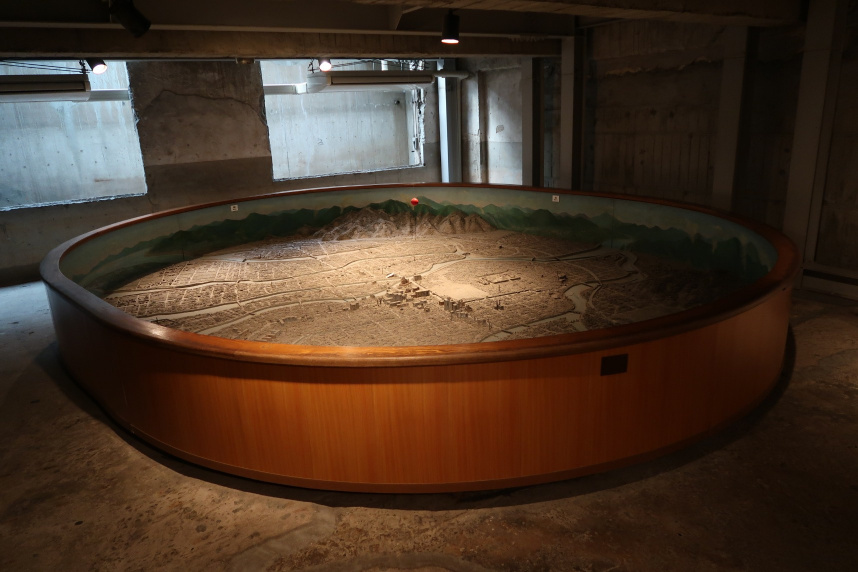 Commentary from Japan Tourism Agency
Commentary from Japan Tourism AgencyHonkawa Elementary School
Table of Contents

Honkawa Elementary School, located just across the Motoyasu River from the A-bomb Dome and now featuring a museum dedicated to peace, stood a mere 410 meters from the atomic blast’s hypocenter—the closest of all Hiroshima schools to ground zero. Completed in 1928, it was the first three-story reinforced concrete structure in the city, as well as Hiroshima’s first reinforced concrete school building.
August 6, 1945, was a regular school day in Hiroshima. After the atomic bomb exploded at 8:15 a.m., every part of the school building except its reinforced concrete outer walls and basement was completely destroyed. Honkawa’s principal, 10 teachers and staff, and around 400 students perished, and to this day it is unclear exactly how they died. Since lessons had not yet started, however, it seems many of the pupils would likely have been playing in the schoolyard when the bomb detonated.
It is believed that only one teacher and one pupil survived. The child later recounted how she had been inside the building’s entrance when she heard a tremendously loud sound, followed by everything turning pitch black. Heading out onto the playground as daylight began to filter through the darkened sky, she saw a classmate who had been instantly incinerated by thermal rays emanating from the atomic blast.
Classes resumed at Honkawa in February 1946, though facilities were makeshift at first. A moving photograph from 1947 shows children once again playing in the schoolyard, now with the skeletal remains of the A-bomb Dome standing in the near distance behind them.
Parts of the original school building were preserved, and these were opened in 1988 as the Honkawa Elementary School Peace Museum. The once three-story structure has been reduced to a single level above ground plus the basement, and work to preserve these remains is ongoing. Inside, traces of black soot dating back to August 6, 1945, can be seen on the walls, along with other damage. Exhibits include a scorched telephone switchboard, charred pieces of balcony pillar from what is now the A-bomb Dome, and the centerpiece: a sizable scale model of the devastated city, complete with a red fireball marking the bomb’s detonation point (formerly exhibited in the Peace Memorial Museum).
